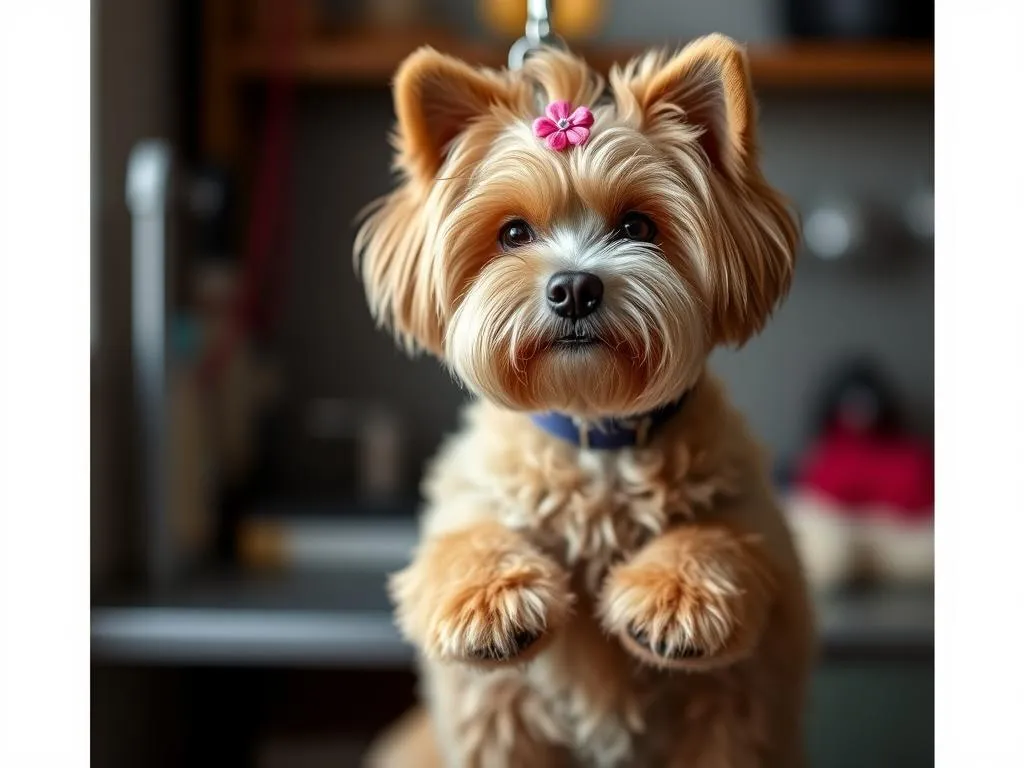
Introduction
The pet grooming industry has become a crucial sector within the broader pet care market, reflecting the growing bond between pets and their owners. As pet ownership continues to rise, so does the demand for grooming services, making it essential for both pet owners and potential business entrepreneurs to grasp the trends and statistics that define this vibrant industry. Understanding these statistics not only assists pet owners in making informed decisions about their pets’ grooming needs but also aids aspiring business owners in recognizing opportunities and challenges within the market.
Pet Grooming Industry Overview
Definition of Pet Grooming
Pet grooming refers to the hygienic care and cleaning of pets, particularly dogs and cats. It encompasses a range of services designed to keep pets clean, healthy, and looking their best. Grooming is not only about aesthetics; it plays a vital role in a pet’s overall well-being.
Types of Grooming Services Offered
The services provided in the grooming industry can be categorized into several types:
-
Basic Grooming: This includes essential services such as bathing, brushing, nail clipping, and ear cleaning. These services are often sought after by pet owners who want to maintain their pet’s cleanliness without extensive styling.
-
Specialized Grooming: This segment includes services like de-shedding, breed-specific cuts, and styling. These services cater to specific breeds and are often tailored to meet unique grooming needs.
-
Mobile Grooming Services: An emerging trend, mobile grooming brings the salon experience directly to pet owners’ homes. This convenience appeals to busy pet owners and those with pets that may be anxious in traditional salon settings.
Historical Context
The pet grooming industry has grown significantly over the years. Initially considered a luxury service, grooming has become a standard expectation for pet owners, reflecting the changing attitudes toward pet care. As pets are increasingly viewed as family members, the demand for professional grooming has surged, establishing a robust market that continues to evolve.
Market Size and Growth Trends
Current Market Size
As of 2023, the pet grooming industry is valued at approximately $8 billion in the United States alone. This figure underscores the substantial investment pet owners are willing to make in grooming services, highlighting the industry’s importance.
Historical Growth Rates and Future Projections
The industry has witnessed steady growth, with a compound annual growth rate (CAGR) of approximately 6% over the past decade. Projections indicate that the market will continue to expand, potentially reaching $11 billion by 2030. This growth is fueled by several factors, including increased pet ownership and a greater emphasis on pet health and wellness.
Factors Driving Growth
Several factors contribute to the robust growth of the pet grooming industry:
-
Rise in Pet Ownership: More households are welcoming pets into their lives, with over 70% of U.S. households owning at least one pet. This increase naturally leads to a higher demand for grooming services.
-
Increasing Disposable Income: As disposable income rises, pet owners are more inclined to spend on luxury services, including grooming. This trend is particularly evident among millennials and Gen Z, who prioritize their pets’ well-being.
-
Trends in Pet Health and Wellness: Pet owners are becoming more aware of the health benefits associated with regular grooming, such as early detection of skin issues and the overall hygiene of pets. This awareness drives demand for professional grooming services.
Demographics of Pet Grooming Customers
Age and Income Statistics
The demographics of pet grooming customers reveal interesting insights. Research shows that the majority of grooming service customers are aged between 30 and 50 years, with a significant proportion having a household income of $75,000 or more. This demographic is often willing to invest in their pets’ grooming needs.
Breakdown of Pet Ownership by Type
Dogs remain the most popular pets, accounting for approximately 65% of pet grooming clients. Cats follow closely, making up around 30% of grooming customers. Other pets, such as rabbits and guinea pigs, represent a smaller share of the market.
Geographic Trends
Geographically, urban areas tend to have a higher concentration of grooming services. Cities often see more mobile grooming businesses and specialized salons due to the higher density of pet owners, while rural areas may rely more on traditional grooming options.
Behavioral Trends Among Pet Owners
Pet owners are increasingly conscientious about grooming frequency. On average, dogs are groomed every 6-8 weeks, while cats may require grooming less frequently, often every 8-12 weeks. Additionally, many pet owners are opting for specialized services, reflecting a shift towards personalized grooming experiences.
Competitive Landscape
Major Players
The pet grooming industry is characterized by a mix of large chains and independent salons. Major players include:
- PetSmart: One of the largest pet supply retailers, offering grooming services in-store.
- Petco: Another major retailer providing grooming along with pet supplies and training services.
- Local Independent Salons: These businesses often thrive on providing personalized services and building strong relationships with their clients.
Mobile Grooming Services vs. Traditional Salons
Mobile grooming services have gained popularity for their convenience and ability to cater to pets that may be anxious in traditional settings. While traditional salons offer a wider range of services and often more experienced groomers, mobile services provide a unique value proposition that appeals to many pet owners.
Market Share Statistics
The market share is increasingly divided between large chains and independent salons. As of 2023, large chains hold approximately 40% of the market, while independent groomers account for around 30%. Mobile grooming services are rapidly growing, currently capturing about 15% of the market.
Key Services and Trends in the Pet Grooming Industry
Popular Grooming Services
Among the most sought-after grooming services are:
- Bathing and Brushing: Essential for maintaining a pet’s coat and hygiene.
- Nail Clipping: Important for preventing discomfort and potential health issues.
- De-shedding Treatments: Particularly popular during seasonal shedding periods.
Emerging Trends
The grooming industry is adapting to evolving consumer preferences, leading to several emerging trends:
-
Natural and Organic Grooming Products: As pet owners become more health-conscious, there is a growing demand for grooming products made from natural ingredients.
-
Technology Integration: The rise of grooming apps and online booking systems is transforming how pet owners schedule grooming appointments, making the process more convenient.
Seasonal Grooming Trends
Grooming demand often fluctuates with the seasons. For instance, spring and summer see a surge in de-shedding services, as pets shed their winter coats. Holiday seasons also witness increased grooming activity as pet owners prepare their pets for family gatherings and celebrations.
Financial Insights
Average Costs of Grooming Services
The cost of grooming services can vary widely based on location and the type of service. On average:
- Basic Grooming: Ranges from $30 to $90, depending on the size of the pet and the services included.
- Specialized Grooming: Can cost between $50 and $150, particularly for breed-specific cuts or de-shedding treatments.
- Mobile Grooming Services: Typically charge a premium, with prices ranging from $75 to $200 per session.
Revenue Statistics
The pet grooming industry generates substantial revenue across its various segments. For instance, mobile grooming alone has seen revenue growth of over 15% annually, reflecting changing consumer preferences.
Profit Margins for Grooming Businesses
Profit margins within the grooming sector can vary. On average, established grooming salons can achieve profit margins of 15-20%. However, mobile grooming services may see even higher margins due to reduced overhead costs.
Investment Opportunities
For new entrants, the pet grooming industry presents lucrative investment opportunities. With a growing market and increasing consumer spending on pet care, aspiring business owners can find success by offering unique services or targeting niche markets.
Challenges Facing the Pet Grooming Industry
Common Challenges
Despite its growth, the pet grooming industry faces several challenges:
-
Staffing and Training Issues: Finding skilled groomers can be difficult, leading to staffing shortages and high turnover rates.
-
Competition from DIY Grooming: With the rise of at-home grooming tools, some pet owners are opting for DIY solutions, impacting traditional grooming businesses.
Economic Factors
Economic fluctuations can also affect the grooming industry. During economic downturns, pet owners may prioritize essential grooming services over luxury options, leading to reduced demand for specialized services.
Regulatory Considerations
Grooming businesses must adhere to various health and safety regulations. Compliance with these standards is crucial to ensure the safety of both pets and groomers, but it can also add to the operational complexities for business owners.
Future Outlook for the Pet Grooming Industry
Predictions for the Next 5-10 Years
The pet grooming industry is expected to continue its upward trajectory over the next decade. As pet ownership remains high, grooming services will increasingly be viewed as essential rather than optional.
Potential Shifts in Consumer Behavior
Consumer preferences are likely to evolve further, with increased demand for eco-friendly products and services. Additionally, the integration of technology in booking and service delivery will become more prevalent.
The Role of Technology
Technology will play a crucial role in shaping the future of grooming services. Innovations such as grooming apps and virtual consultations may enhance customer experiences, making it easier for pet owners to care for their pets.
Conclusion
The pet grooming industry statistics provide valuable insights into a thriving market that reflects the growing importance of pet care. From understanding the demographics of grooming customers to recognizing the competitive landscape, these statistics are instrumental for both pet owners and potential business entrepreneurs. As the industry continues to evolve, staying informed about trends and changes will be vital for those involved in this dynamic sector.
By embracing the current landscape and anticipating future developments, stakeholders can navigate the pet grooming industry effectively, ensuring the continued health and happiness of our beloved pets.









